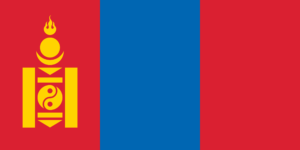History of Mongolia:
For thousands of years, indigenous peoples lived in Mongolia. However, it is best known for the formidable Mongol Empire, which was founded in 1206 AD by the ruthless tyrant Chinggis (also known as Genghis) Khan. Together with the emperors that came after him, Genghis Khan amassed a sizable force of Mongol troops and conquered a large portion of Asia and Russia. The well-known Kublai Khan was the grandson of Genghis Khan. China was ruled by Kublai Khan, who also founded the Yuan Dynasty. Due to Marco Polo’s writings, Kublai gained notoriety in Europe.
In China, the Mongol empire was overthrown in 1368. By 1691, China had full authority over Mongolia. Prior to Russia assuming control of it in 1911, outer Mongolia was a Chinese province. China briefly regained power after the collapse of the Russian Empire.
Mongolia attained independence in 1921 with assistance from the Soviet Union. The newly erected administration adhered to Soviet-style communism.
Information about Mongolia:
| Capital | Ulaanbaatar |
| Population | 3,455,884(Source: 2023 worldometer) |
| Major Cities | Ulaanbaatar, Khovd, Darkhan, Erdenet, Murun, Ölgii, Ulaangom, Arvaikheer, Choibalsan |
| Borders | Russia to the north and China to the south, east of Kazakhstan |
| Gross Domestic Product (GDP) | $16,810,883,361 (2022 worldometer) |
| Currency | togrog/tugrik (MNT) |
Flag of Mongolia:
Mongolia Economy Key Industries:
Mongolia Major Industries: construction and construction materials; mining (coal, copper, molybdenum, fluorspar, tin, tungsten, and gold); oil; food and beverages; processing of animal products, cashmere and natural fiber manufacturing
Mongolia Agricultural Products: wheat, barley, vegetables, forage crops; sheep, goats, cattle, camels, horses
Mongolia Natural Resources: oil, coal, copper, molybdenum, tungsten, phosphates, tin, nickel, zinc, fluorspar, gold, silver, iron
Mongolia Major Exports: copper, apparel, livestock, animal products, cashmere, wool, hides, fluorspar, other nonferrous metals
Mongolia Major Imports: machinery and equipment, fuel, cars, food products, industrial consumer goods, chemicals, building materials, sugar, tea
The Geography of Mongolia:
Total Size of Mongolia: 331,690 km² (source: wikipedia)
Geographical Low Point of Mongolia: Hoh Nuur 518 m
Geographical High Point of Mongolia: Nayramadlin Orgil (Huyten Orgil) 4,374 m
Climate of Mongolia: desert; continental (large daily and seasonal temperature ranges)
General Terrain of Mongolia: vast semidesert and desert plains, grassy steppe, mountains in west and southwest; Gobi Desert in south-central
World Region or Continent of Mongolia: Asia
Geographical Coordinates: 46 00 N, 105 00 E
The People of Mongolia & Culture
Mongolia Government Type: mixed parliamentary/presidential
Mongolia Nationality: Mongolian(s)
Mongolia National Holiday: Independence Day/Revolution Day, 11 July (1921)
Mongolia Independence: 11 July 1921 (from China)
Mongolia National Symbol: soyombo emblem
Mongolia National Anthem or Song: Mongol ulsyn toriin duulal (National Anthem of Mongolia)
Mongolia Languages Spoken: Khalkha Mongol 90%, Turkic, Russian (1999)
Mongolia Religions: Buddhist Lamaist 50%, none 40%, Shamanist and Christian 6%, Muslim 4% (2004)
Interesting Facts about Mongolia:
In Mongolia, the first hotel to open was the Ulaanbaatar Hotel. Launched in 1961. It was also the first building with running hot and cold water for the general public.
Mongolia has the least population in the entire planet.
The capital of Mongolia, Ulaanbaatar, is recognized as the coldest city in the world.
The capital’s name, Ulaanbaatar, translates to “red hero”.
The word “Mongol” implies “brave.”
One of the largest holidays of the year is Naadam Festival. This is also the biggest sporting event.
The Gobi Desert is Asia’s biggest sand dune. It is exceptional around the world.
The endangered two-hump Bactrian camel is native to Mongolia.
To celebrate these well-known camels and protect the species, a celebration is held. This camel event first began in 1997.
One-third of the snow leopards in the world reside in Mongolia.
The Mongolian people have a highly developed host culture. They typically offer their visitors a bowl of “airag” as a welcome. This equine milk has undergone fermentation. It is considered disrespectful to turn down a cup of this.
The weather doesn’t stop Mongolians from enjoying ice cream. This is distributed in paper cartons during the winter. In such chilly conditions, a refrigerator is not necessary.
Mongolia presently holds the Guinness World Record for the largest match in wrestling history. For the 2011 Mongolian national wrestling tournament, this was carried out.
Genghis Khan introduced the first writing system to Mongolia at the start of the 13th century despite not being literate himself. He directly borrowed this script from Uyghurs. This script is written vertically from left to right.
Mongolia adopted the Latin alphabet in the 1930s. The Cyrillic alphabet, which includes two additional letters and sounds identical to ö and ü, replaced it in 1941.
A mother who has five or more children is referred to as a “Honored Mother”.
Music is highly valued in Mongolian culture and is used to express affection for loved ones, friends, the environment, and horses.
Buddhism and shamanism are the two most popular religions in Mongolia. Islam is now practiced by about 6% of Mongolians, a significant growth.
The biggest festival in Mongolian culture, Naadam, normally takes place during the capital season from July 11 to 13. The Mongolian tribe uses this occasion to dance, celebrate, and show the utmost respect for their ancestors.
Naadam features competitive sporting events like racing, wrestling, and archery. Another celebration celebrated there is Tsagaan Sar, or the Mongolian New Year.
In the 1920s, petrified dinosaur bones and the first dinosaur eggs were found in the Gobi Desert. Keep an eye out for dinosaur fossils; many of them can still be seen today.


